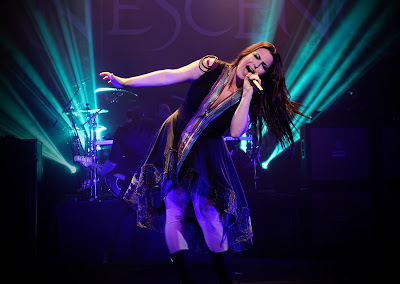A Revolutionary Rock Star: Janis Joplin
By Elspeth Sweatman
Janis Joplin—the bluesy singer at the center of A Night with Janis Joplin, which opens June 7 at The Geary Theater—“belonged to that select group of pop figures who mattered as much for themselves as for their music,” says music journalist Ellen Wills. “Among American rock performers, she was second only to Bob Dylan in importance as a creator–recorder–embodiment of her generation’s mythology.”
Janis Joplin rejected the accepted norms of how female musicians were supposed to behave and appear; she wore her hair naturally instead of perfectly coiffed in a beehive, and wore informal clothing instead of tailored, sequined gowns.
And, most importantly, she adopted a sexual persona onstage, acting as a woman who put her own pleasure first. Through songs such as “Get It While You Can,” Joplin became the figurehead of the second-wave feminist movement. In this song, Joplin discusses the prevailing view that women should postpone pleasure (i.e. sex) until they are married, and then should put off professional fulfillment for the sake of their children. Instead, Joplin advocated for women to embrace their sexual needs: “Hey, hey, get it while you can / Don’t you turn your back on love.”
Joplin opened doors for female musicians, and her impact can be seen in the leading female musicians of today. Women are at the forefront of all the major music genres: rock (No Doubt, Evanescence, Joan Jett), pop (Beyoncé, Katy Perry, Taylor Swift, Lady Gaga), rap and hip-hop (Missy Elliot, Nicki Minaj), and country (Dolly Parton, Carrie Underwood). Like Joplin, these artists are upfront about female sexual pleasure, societal double standards, and the power and strength of women.
Joplin’s larger-than-life personality, charismatic sexuality, laidback sense of style, whiskey-laced stage antics, and full-bodied performances may not share exactly the same artistic DNA as contemporary music’s tastemakers and trendsetters, but she was indisputably revolutionary in her time, and she paved the way for many of the female musicians who followed.
A Night with Janis Joplin runs June 7–July 2 at The Geary Theater. Click here to purchase tickets through our website. Want to learn more about female musicians in the 1960s? Click here to purchase Words on Plays, A.C.T.’s in-depth performance guide series.
Janis Joplin—the bluesy singer at the center of A Night with Janis Joplin, which opens June 7 at The Geary Theater—“belonged to that select group of pop figures who mattered as much for themselves as for their music,” says music journalist Ellen Wills. “Among American rock performers, she was second only to Bob Dylan in importance as a creator–recorder–embodiment of her generation’s mythology.”
 |
| Big Brother and the Holding Company. Photo by Albert B. Grossman, late '60s. Courtesy Wikimedia Commons. |
And, most importantly, she adopted a sexual persona onstage, acting as a woman who put her own pleasure first. Through songs such as “Get It While You Can,” Joplin became the figurehead of the second-wave feminist movement. In this song, Joplin discusses the prevailing view that women should postpone pleasure (i.e. sex) until they are married, and then should put off professional fulfillment for the sake of their children. Instead, Joplin advocated for women to embrace their sexual needs: “Hey, hey, get it while you can / Don’t you turn your back on love.”
 |
| Evanescence performing live at The Wiltern theatre in Los Angeles, California on Tuesday November 17th, 2015. Photo by Justin Higuchi. Courtesy Wikimedia Commons. |
Joplin’s larger-than-life personality, charismatic sexuality, laidback sense of style, whiskey-laced stage antics, and full-bodied performances may not share exactly the same artistic DNA as contemporary music’s tastemakers and trendsetters, but she was indisputably revolutionary in her time, and she paved the way for many of the female musicians who followed.
A Night with Janis Joplin runs June 7–July 2 at The Geary Theater. Click here to purchase tickets through our website. Want to learn more about female musicians in the 1960s? Click here to purchase Words on Plays, A.C.T.’s in-depth performance guide series.

